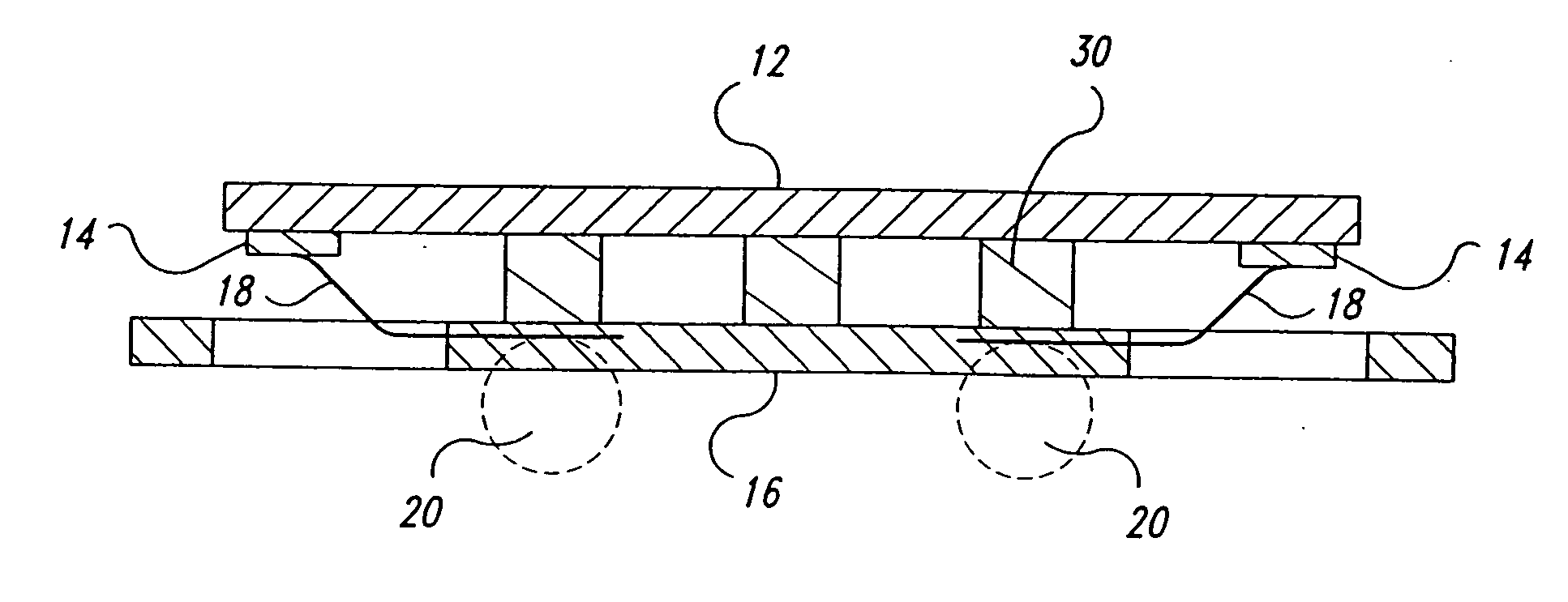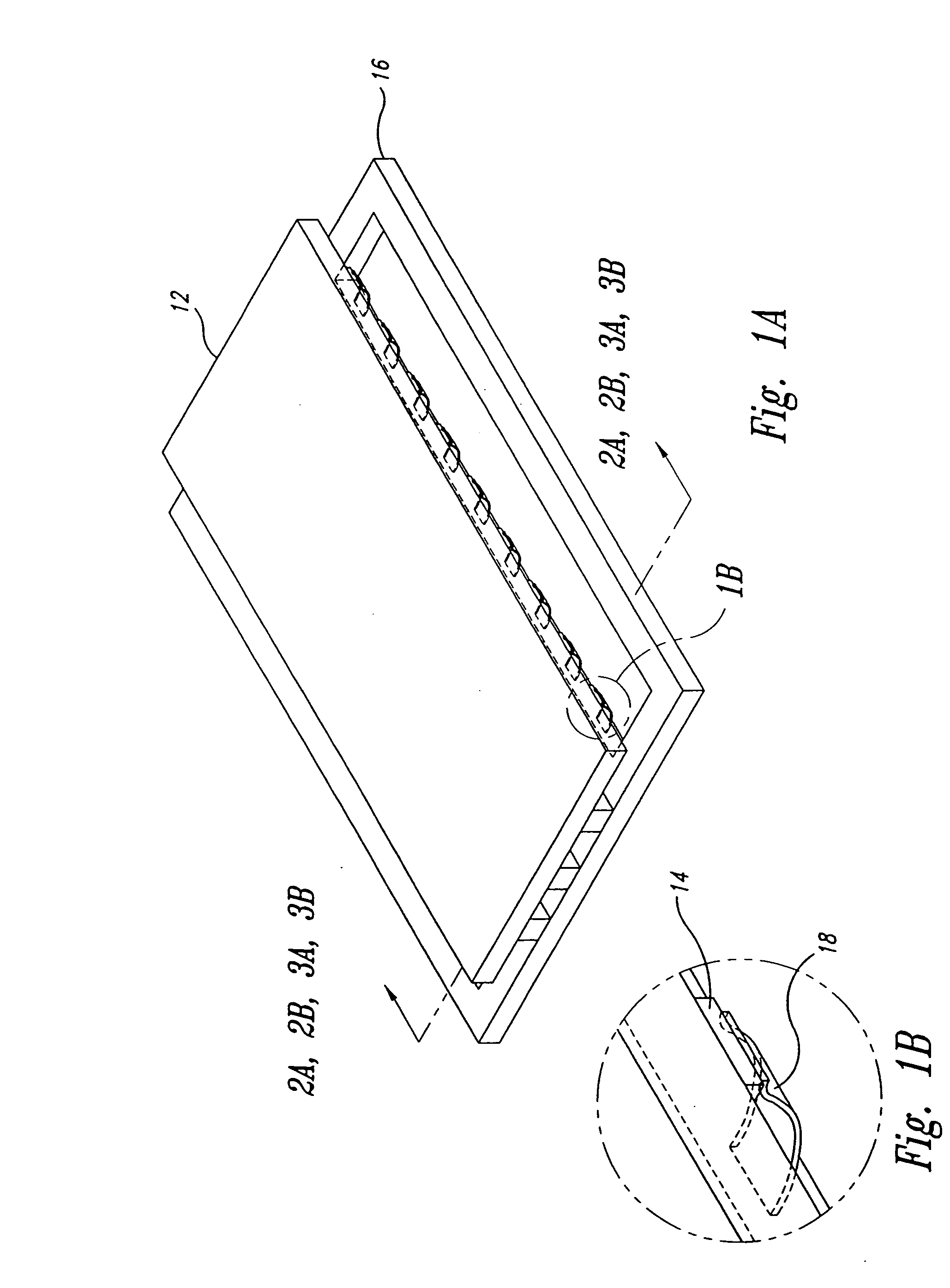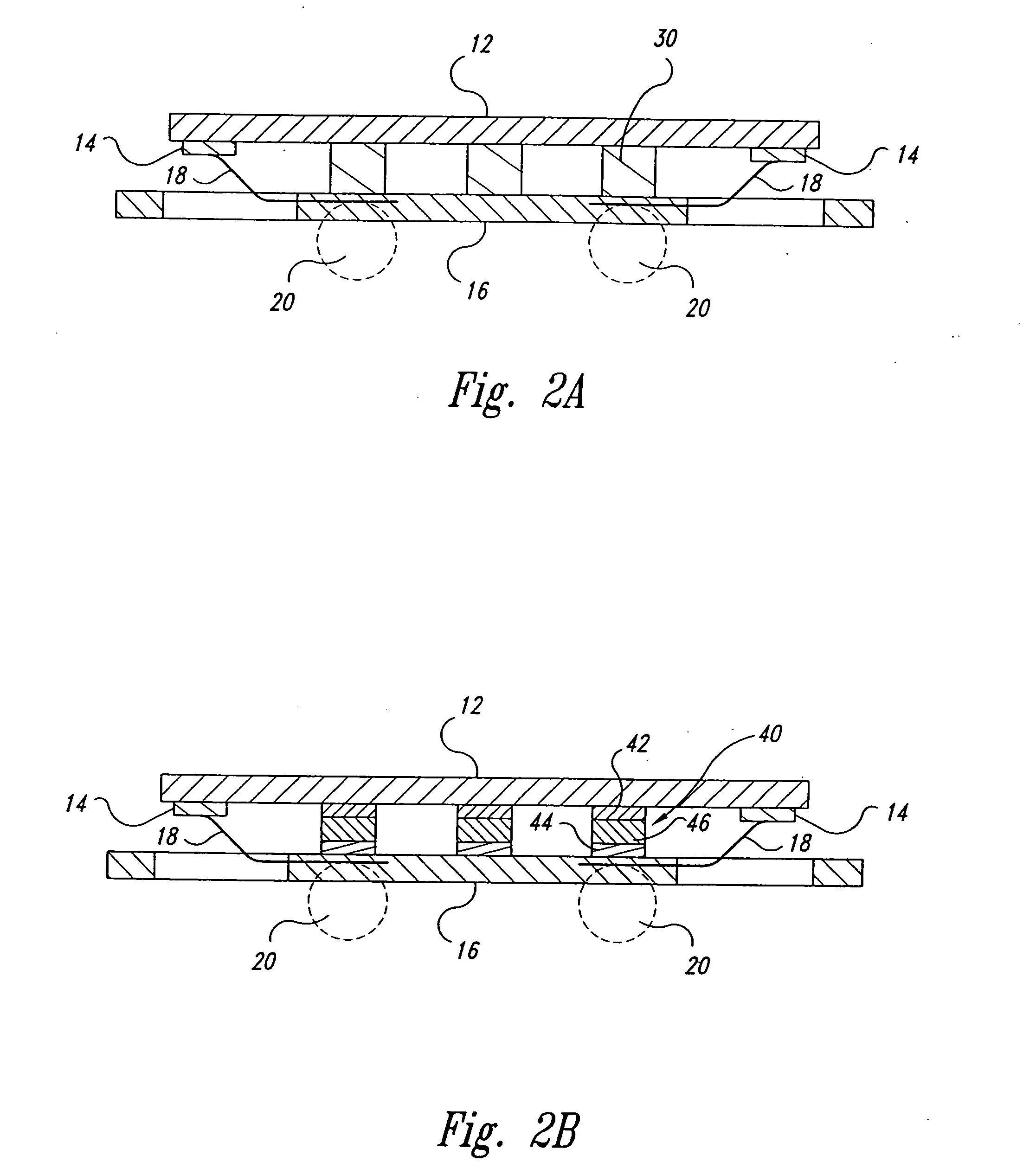Method and structure for manufacturing improved yield semiconductor packaged devices
a technology of packaged devices and semiconductors, applied in semiconductor devices, semiconductor/solid-state device details, electrical apparatus, etc., can solve problems such as thermal mismatch stress, failure to meet the requirements of the sealing process, so as to achieve high reliability and alleviate thermal mismatch stress
- Summary
- Abstract
- Description
- Claims
- Application Information
AI Technical Summary
Benefits of technology
Problems solved by technology
Method used
Image
Examples
Embodiment Construction
[0016] Embodiments of the present invention use a plurality of pieces of adhesive film to attach a semiconductor die to a substrate in a BGA type package. Using multiple pieces of adhesive film alleviates some of the thermal mismatch stress between the semiconductor die and the PCB to which the packaged device is soldered, while maintaining the reliability of the packaged device itself. As will be illustrated below, the sum change in the length of the pieces of adhesive film will be less than the change in the length of a elastomer pad of a conventional BGA package structure of similar size. Thus, the stress applied to the TAB wire joints caused by thermal expansion will be reduced with respect to the conventional package structure. The pieces of adhesive film are attached to the substrate by pressure bonding, and the die is subsequently pressure bonded to the opposite surface of the pieces of adhesive film. Coplanarity of the die and the substrate is maintained by the substantially...
PUM
 Login to View More
Login to View More Abstract
Description
Claims
Application Information
 Login to View More
Login to View More - R&D
- Intellectual Property
- Life Sciences
- Materials
- Tech Scout
- Unparalleled Data Quality
- Higher Quality Content
- 60% Fewer Hallucinations
Browse by: Latest US Patents, China's latest patents, Technical Efficacy Thesaurus, Application Domain, Technology Topic, Popular Technical Reports.
© 2025 PatSnap. All rights reserved.Legal|Privacy policy|Modern Slavery Act Transparency Statement|Sitemap|About US| Contact US: help@patsnap.com



